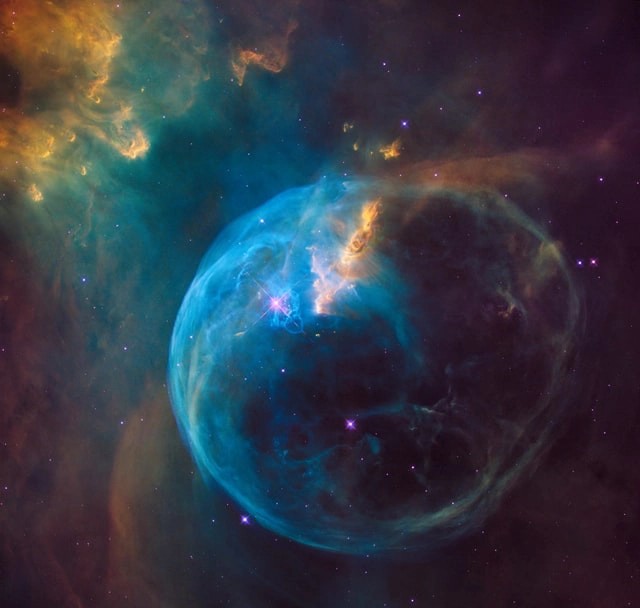Spoiler alert
We are a way for the universe to know itself. Some part of our being knows this is where we came from. We long to return. And we can, because the cosmos is also within us. We’re made of star stuff ~ Carl Sagan
How can we be made of stardust?
About 13 billion to 14 billion years ago as our universe expanded and cooled to form protons, neutrons, and eventually atoms from subatomic particles, we had our first elements - Hydrogen and Helium. Today from various observations we know, earth and other solid objects are made of heavier elements but our sun and stars are made of Hydrogen and Helium during most of their lifetime, and heavier elements were formed at different stages during the life cycle of the star ;)
How do we know?
Firstly, we live on earth so we can study the composition of the earth but what about distant objects light-years away? How do we know what’s happening in the stars so far away from us? As Who Invented First quotes
The spectroscope, aided by a powerful telescope, provides a picture called a spectrogram or spectrograph, which spreads the light patterns out into a rainbow. Looking at the spectrograph gives scientists information on the position of emission and absorption bands – the “fingerprints” of atoms and molecules – causing the unique light spectrum coming from that particular object.
By studying the light (spectroscopy) from a distant star we can determine its composition and indirectly more characteristics as we collect more data.
Life cycle of a star
Stars are formed from vast nebulae, some spreading light-years across and mostly containing hydrogen, helium, and the remains of the previous star. Gravity slowly pulls the gas together to transform the cloud into a star. As the gas gets pulled in by gravity, the accumulated gas pulls in more and more material. There comes a point where the core gets hot enough to support nuclear fusion and the life of a star begins.
A star is powered by Nuclear Fusion at its core. Hydrogen is fused into Helium by a process known as nucleosynthesis. As it happens at the core of the star, it is termed as Stellar nucleosynthesis. This theory was initially proposed by Fred Hoyle in 1946, who later refined it in 1954.
Various categories of stars with different masses burn their hydrogen at different rates. Massive high mass stars generate high pressure and temperature at their core and burn up their fuel quickly only to live about 10 million years. While the tiny (are they?) low mass stars burn their hydrogen slowly to live 10 billion years or more.
All of this fusion generates an insane amount of energy because when two Hydrogen ions (two protons) combine at the core, a small part of their mass is converted into energy. If you are interested here is a link to a Wikipedia article on stellar nucleosynthesis. This generated energy keeps the star from collapsing due to its gravity.
The death of a star begins with its birth because a star will continuously fuse hydrogen into helium during a large portion of its lifetime. Eventually, the star runs out of hydrogen and its core will collapse more to become hot enough for helium to fuse into carbon and eventually oxygen. When this happens the outer layers of the star are blown away and a super dense hot core is left behind with the gas cloud around it. The core is a white dwarf and eventually cools to become a black dwarf. This is only the case for low mass stars.
A more massive high mass star has a much hotter core and can fuse Oxygen to Neon to Silicon and finally Iron. Why finally? Because Iron nuclei are very stable and cannot be fused further in a star, Till this point energy spreading outward and gravity pulling everything together were balanced. After the formation of iron, gravity wins over as Nuclear fusion stops and a star collapses to dies with a phenomenal supernova and turns into a neutron star or a black hole. During the collapse, even the Iron fuses into heavier elements like Radium, Zinc, Gold (Now we know why gold is rare), and others. 4.5 billion years ago our earth was formed during the birth of our solar system, literally from stardust ✨
Photo of a supernova by NASA

Now you know that the calcium in your teeth, the iron in your blood, the oxygen you breathe was synthesized in a dying star. Wow!